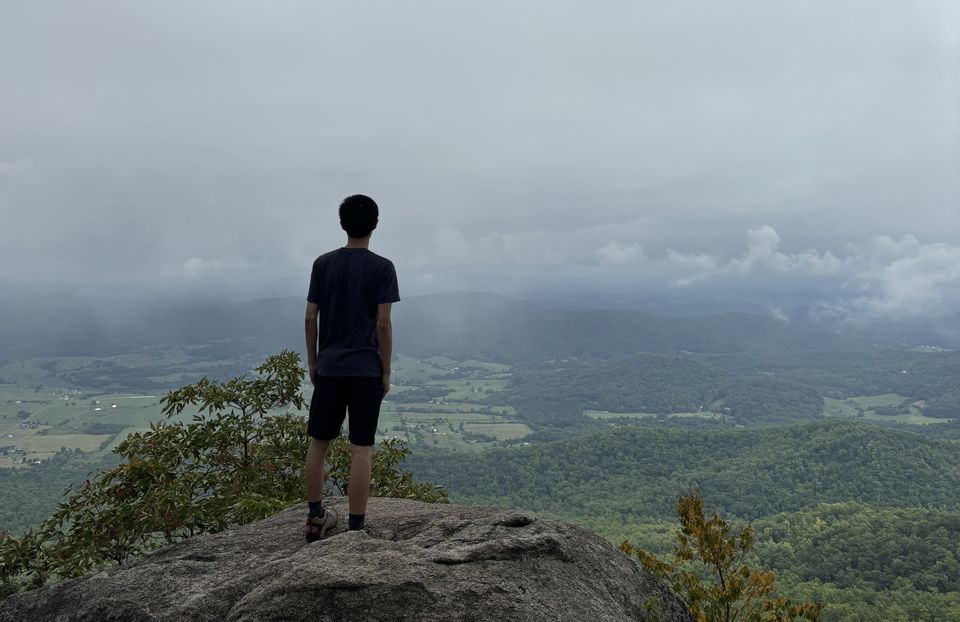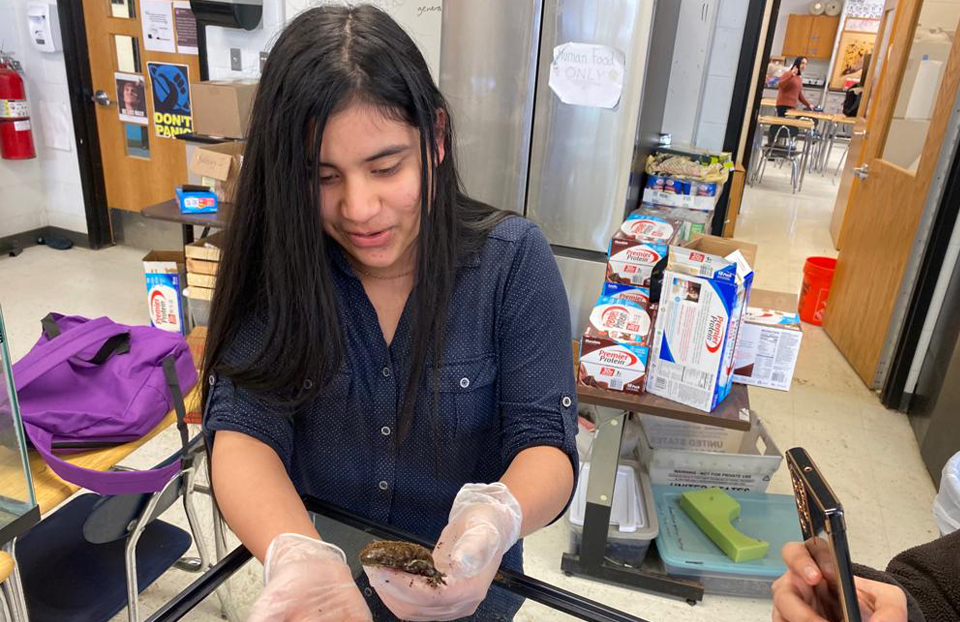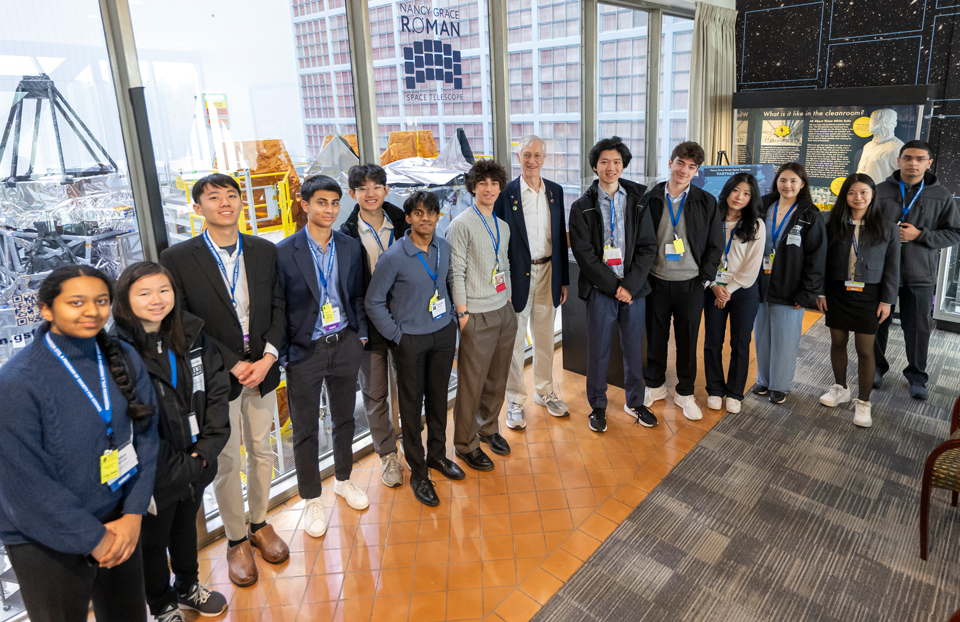How 10 STS finalists went above and beyond to find STEM mentors

When one doesn’t know everything about a topic, they often seek out someone who does. That’s what these 2025 Regeneron Science Talent Search finalists did when a subject caught their interest. Having a meaningful mentoring relationship can be a strong indicator of future success. For those pursuing careers in STEM, mentoring can boost confidence and help better navigate science and engineering.
Conducting college or Ph.D.-level research in high school is rare, but STS finalists stand out year after year because of their extraordinary initiative to seek out mentors and immerse themselves in advanced scientific inquiry. Mentors can be found in a variety of ways. Below, see how some of this year’s finalists found and connected with their mentors, whether through cold emailing a researcher, independently exploring a scientific topic, or asking for extra guidance from teachers.
Finán Gammell
East Greenwich High School (East Greenwich, Rhode Island)
“I met my mentors through my acceptance to the Pathology and Laboratory Medicine internship at Brown University. Dr. Alper Uzun was the most involved in my research, providing me with guidance on how to prepare work for publication, though I was responsible for project theory and development. Jennifer Li, an undergraduate at Brown, helped me create a supporting pseudogene cleaning script. Finally, Dr. Jessiva Plavicki was the director of the internship and provided feedback to help revise my manuscript.”
Vishwum Kapadia
University School (Hunting Valley, Ohio)
“Dissecting a sheep’s heart in the 7th grade, I was introduced to the complexities of cardiovascular function. As I dissected the heart, I became fascinated with the flow of blood through different valves. Since then, I have sought to learn more about the topic, especially as it relates to hemodynamics and the cardiac cycle. I applied to do research in the Cleveland Clinic’s cardiovascular department as a high school student. I noticed that Dr. Harb and Dr. Krishnaswamy worked in echocardiography and the cardiac catheterization lab, which sounded interesting to me. I reached out to them to set up a meeting and watched a procedure, and from there, I started working on this STS project. My mentors were involved in my research process by providing feedback on my questions, design, methodology, interpretations and conclusions, answering any questions I had.”
Chloe Lee
Plano East Senior High School (Plano, Texas)
“In May 2023, I attended the NSF Sustainable Material Summer Workshop at UTA, organized by Dr. Jeon and Dr. Byung Ran So. I discovered the workshop when taking the USNCO local exam at UTA in March. At the workshop, I was intrigued by Dr. Jeon’s research in organic synthesis. After reaching out, I began research at the lab where, although working largely independently, I received guidance. Dr. Jeon and Suman taught me essential organic synthesis techniques, provided access to advanced equipment, verified my analyses, and assisted with mechanism development.”
Logan Lee
‘Iolani School (Honolulu, Hawaii)
“I met Dr. Yvonne Chan at my school, where she runs the research program. Due to my interest in Native Hawaiian forest bird conservation, she connected me with Ms. Lorraine Waianuhea, who is a doctoral student at the Medeiros Hui Lab. I developed my methodology based on a literature review, which Ms. Waianuhea helped me refine. She guided me in techniques such as mosquito dissections, mosquito rearing, and the use of lab equipment. I performed the lab work with assistance when needed. Dr. Chan oversaw my DNA sequencing and genomic analyses.”
Benjamin Li
Millburn High School (Millburn, New Jersey)
“Prior to this project, I did research without mentorship on brain tumor segmentation in 2023-24, submitting it to science fairs. By June 2024, I decided to redevelop the study specifically for application to medically underserved populations and sent cold emails to professors nationwide for potential mentorship opportunities. I was fortunate to connect with Dr. Dimah Dera from the Rochester Institute of Technology and Dr. Kai Ding from Johns Hopkins University.”
Yurai Gutierrez Morales
Princeton High School (Princeton, New Jersey)
“I discussed the procedures on my animal sciences project with Mr. Mark Eastburn at Princeton High School, who put me in contact with Mr. Cristian Aguirre in the Centro Ecológico Akumal. I also visited the lab of Dr. Jessica Ware to complete my DNA extractions, but developed this experiment on my own and designed the procedures after I obtained the necessary safety information.”

Sandeep Sawhney
Herricks High School (New Hyde Park, New York)
“I found a paper written by Dr. Ohayon in September 2022 titled ‘Self-assembly of 3D DNA crystals containing a torsionally stressed component,’ which interested me in the capabilities of DNA-encapsulating host molecules. I then searched for his lab at New York University and emailed him in October 2022 about a potential summer 2023 mentorship. In October 2022, he interviewed me and discussed project ideas. Dr. Ohayon suggested that I work with Dr. Vecchioni, researching metal-ion DNA technologies, which was of great interest. I worked under Dr. Vecchioni for both summers of 2023 and 2024, helping me execute my projects.”

Addison Grace Shea
Lakewood Ranch High School (Bradenton, Forida)
“My mentor was my AP research teacher during my junior year of high school. She held individualized progress meetings with me a few times each quarter, during which she would ask questions regarding my project and its status. Her involvement in my specific project was limited to asking questions rather than providing specific, directional feedback. She also did not (per AP College Board’s guidelines) revise my paper. She instructed the class about the general formatting of the literature review, methodology, and results sections of a research paper.”
Ray Zhang
Thomas Jefferson High School for Science and Technology (Alexandria, Virginia)
“Inspired to aid patients who had been afflicted with rare fungal infections, I cold-emailed hundreds of microbiology professors at local institutions. Only 1 took me on. Shortly after, I began working in my PI’s (mentor’s) laboratory. I didn’t have any pre-existing relationships with my mentor. Throughout my research project, my mentor primarily supervised my work in the laboratory to ensure safety, although she did not directly intervene with my experimentation. Additionally, she offered limited feedback here and there to guide specific aspects of my project, but my research was very largely my independent work.”

Minghao Zou
Valley Christian High School (San Jose, California)
“Conducting research at my school’s Astronomy Research Program in tenth grade, I discovered Professor Bart Ripperda’s paper on simulating “magnetic field reconnection” near black holes. His work on relativistic plasma motion perfectly combined my interests in general relativity and quantum physics, so I emailed him, detailing my passion and qualifications for pursuing research in his field. To my excitement, he shared resources and representative papers, and I soon began conducting research under his guidance. In October 2023, at the Stanford Simons Collaboration on Extreme Electrodynamics of Compact Sources meeting, I met other mentors involved in the research.”
To learn more about these incredible students and their hard work, join us on Sunday, March 9, at the Conrad Hotel from 1:30 p.m. to 3:30 p.m. for the Public Exhibition of Projects during STS Finals Week. More information about the students can also be found here.


